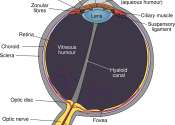Inducing visual function
Scientists from the groups of Botond Roska and Witold Filipowicz at the Friedrich Miescher Institute for Biomedical Research have resolved the mechanism controlling the maintenance of the light sensitive "antennas" of photoreceptors ...
Jul 2, 2014
0
0






